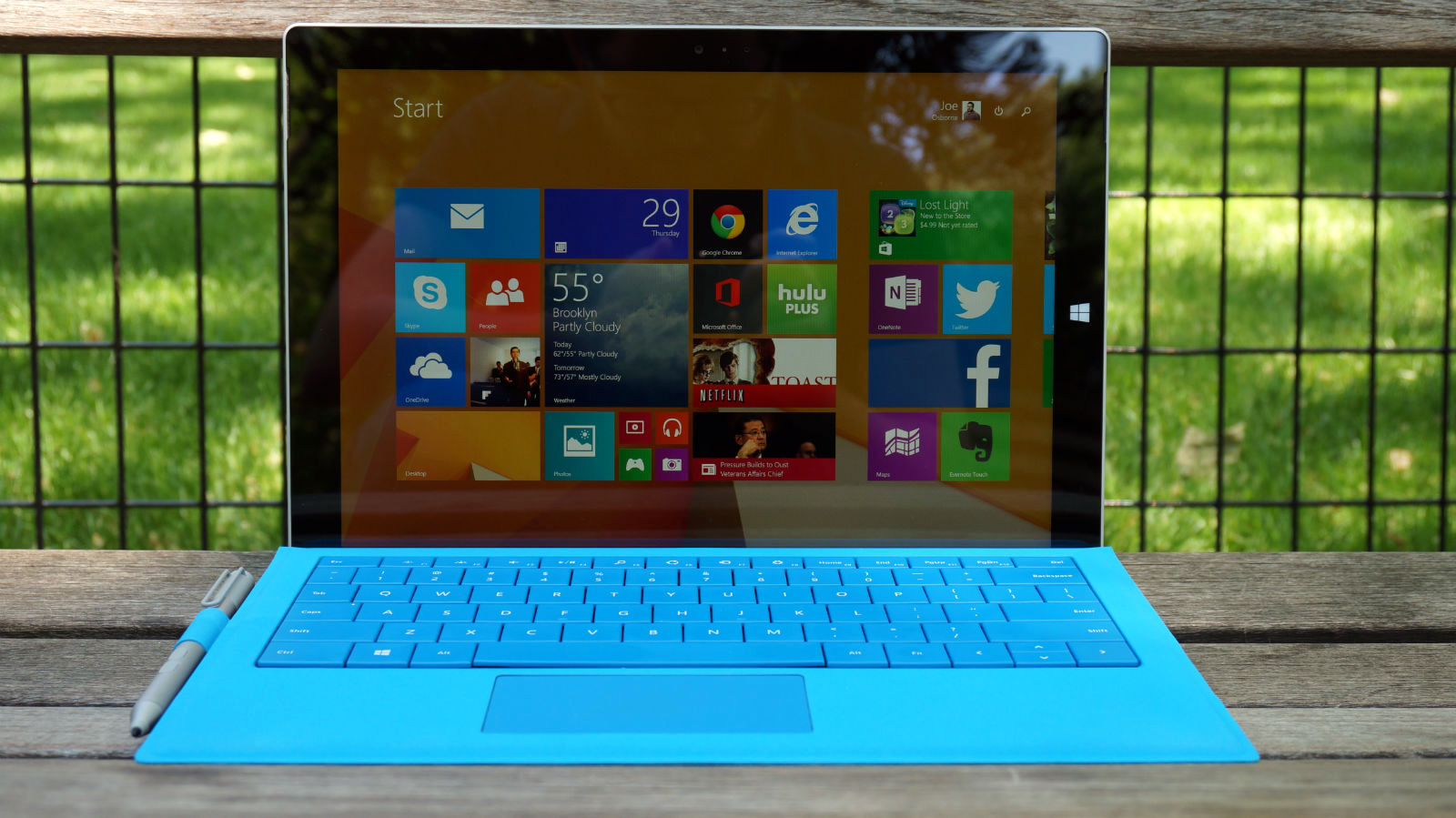Surface Pro 3 vs iPad Air 2: which is better for business?
Which tablet is ideal for business users?

Microsoft is going for the jugular. In recent ads, the tech giant has made a direct comparison to Apple products – usually the Surface tablet against the MacBook Air laptop.
For business users, a more apt comparison – because there are also super-thin laptops that run Windows 8 and are aimed more squarely at the MacBook Air – is between the new Surface Pro 3 tablet and the Apple iPad Air 2, which now sports a faster processor, a 64-bit architecture, and (more importantly than anything) widespread adoption with business users.
Key factors
There are two key factors to consider here. One is that, according to Gartner, there are many millions of iPad devices in use across the world. The tablet enjoyed a 25% market share in Q3 of 2014, and in general, the iPad is still a major seller.
However, there is a second factor at work here. In the same Gartner report, there's a downward trend. The iPad market share stood at 29.7% in Q1 of 2014, then fell to 27.8% in Q2. During those same quarters, Microsoft's market share with all Windows-based tablets rose from a low of 0.9% in Q1 up to 1.9% in Q3.
Yet, the iPad still dominates by a wide margin. Here are the pros and cons for each tablet in the business world, with comments from well-known enterprise computing experts.
Surface Pro 3
The new Surface Pro 3 has several key changes that make it more attractive for mobile professionals. One is that it is thinner (by 33%) than the previous model. The aspect ratio of the 12-inch screen is 3:2 instead of 16:9 which means enterprise apps designed for the desktop will fill the screen without looking odd. (The more square size also helps with split-screen views.)
Microsoft also offers three processor configurations – the Intel i3, the i5, or the i7 – at three prices points starting at £639 (from $799 in the US, around AU$940). That gives businesses more flexibility in which one they deploy. The device supports DisplayPort for connecting an external monitor and a USB 3.0 port for connecting peripherals like a keyboard or mouse. A docking station for the Surface Pro costs £165 ($199 in the US, around AU$235) and uses the power port to add networking, display, and more USB ports.
Sign up to the TechRadar Pro newsletter to get all the top news, opinion, features and guidance your business needs to succeed!
The pen is a major differentiator. With the Microsoft OneNote app, you can expect to take notes without smudges and then convert your handwritten notes to text. The pen snaps onto a magnet on the side of the device. You can also expect all-day battery life.
"Surface will be better in Microsoft shops, where the tablet function will actually be used, and for those that need touch," says Rob Enderle, a business analyst.
"On the Surface Pro 3 versus iPad Air 2 comparison as a business machine, my money is on the Surface," adds Charles King, an IT analyst who covers enterprise computing. "That's mainly because Apple's dominance of the tablet market aside, the iPad remains a device that's primarily made for media consumption, not workplace productivity.
"In addition, the vast majority of businesses run on Microsoft platforms like Sharepoint and Exchange, and use Office productivity applications and tools. The Surface Pro's integration with core Microsoft solutions means that most employees can begin working productively with it in short order, and that systems can be deployed, managed and secured with most if not all of the same tools IT is using with other Windows-based endpoints."
Mikako Kitagawa, a Principal Research Analyst at Gartner, agrees, saying the Surface is designed for business users who need to run Windows enterprise apps.
"A user can do the same tasks on Surface Pro 3 as they do on PC, but they cannot do those tasks on an iPad Air 2," she says. "These tasks are matters for productivity gain. Now, you can use Microsoft Office on iPad, but the user experience of Office on iPad is not the same as the experience through a PC and the Surface Pro. Also, the lack of split-screen multitasking and lack of mouse support on the iPad is a major issue which lowers the user's productivity."
"When we say the tablet can replace the laptop we mean the tablet is designed to maximise performance," says Brian Eskridge, a senior manager for Microsoft Surface. "As a business pro you need corporate data and enterprise-class manageability and security in a single device.
"You get this full set of tools. You get a full 12-inch colour display, with the Surface pen that comes with the device to replace a laptop and a paper note-taking tool. Also, looking at this as a desktop replacement, you can run multiple monitors, connect to a keyboard and mouse and use the full power of a PC in a workstation environment."
What's missing? One of the most obvious disadvantages is that the Surface Pro 3 is still heavy at 1.76 pounds. It weighs almost as much as two iPad Air 2 tablets. There is no version that comes with built-in 4G connectivity, although you can add a USB adapter for 4G service.
And Microsoft still hasn't attracted nearly enough developers who make touch apps that run in the Metro tile interface – even a cursory look reveals that there are still the same few business apps like Evernote and Skype, but hardly anything innovative or new.
John Brandon has covered gadgets and cars for the past 12 years having published over 12,000 articles and tested nearly 8,000 products. He's nothing if not prolific. Before starting his writing career, he led an Information Design practice at a large consumer electronics retailer in the US. His hobbies include deep sea exploration, complaining about the weather, and engineering a vast multiverse conspiracy.
